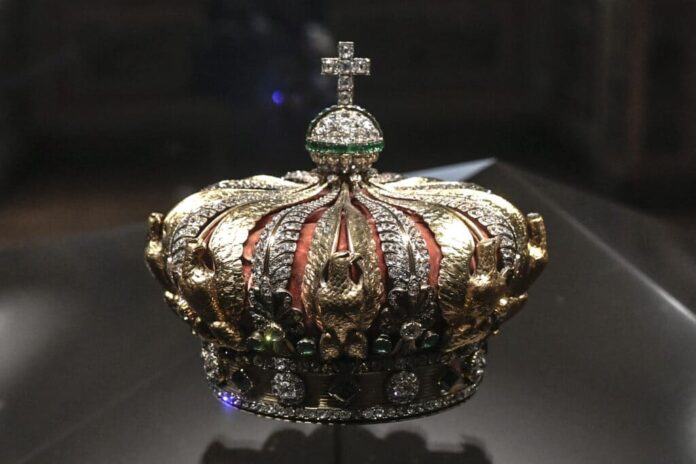
Thieves in balaclavas broke into Paris’ Louvre, the world’s most-visited museum, and stole priceless objects from an area that houses the French crown jewels before escaping on motorbikes, officials said.
The thieves pulled up outside the Louvre on Sunday morning, on a road along the Seine river, and climbed an extendable ladder to break into an upper window that looks into the Galerie d’Apollon, or Apollo Gallery, authorities said.
The thieves struck at about 9:30 a.m. when the museum had already opened its doors to the public, and entered the Galerie d’Apollon building, Paris Prosecutor Laure Beccuau said on BFM TV.
The robbery took between six to seven minutes and was carried out by four people who were unarmed, but who threatened the guards with angle grinders, she said.
A total of nine objects were targeted by the criminals, and eight were actually stolen. The thieves lost the ninth one, the crown of Napoleon III’s wife, Empress Eugenie, during their escape, Beccuau said.
The Culture Ministry said eight pieces were stolen.
The crown of Empress Eugenie was found outside the museum. The thieves apparently dropped the piece, made of gold, emerald and diamonds, as they made their getaway.
In the minutes-long strike inside the world’s most-visited museum, thieves rode a basket lift up the Louvre’s facade, forced a window, smashed display cases and fled with priceless Napoleonic jewels.
The daylight heist about 30 minutes after opening, with visitors already inside, was among the highest-profile museum thefts in living memory and comes as staff complained that crowding and thin staffing are straining security.
The theft unfolded just 250 meters (270 yards) from the Mona Lisa, in what Culture Minister Rachida Dati described as a professional “four-minute operation.”
One object, the emerald-set imperial crown of Napoleon III’s wife, Empress Eugénie, containing more than 1,300 diamonds, was later found outside the museum, French authorities said. It was reportedly recovered broken.
Images from the scene showed confused tourists being steered out of the glass pyramid and adjoining courtyards as officers closed nearby streets along the Seine.
A lift — which officials say the thieves brought and which was later removed — stood against the Seine-facing façade, their entry route and, observers said, a revealing weakness: that such machinery could be brought to a palace-museum unchecked.
Around 9:30 a.m., several intruders forced a window, cut panes with a disc cutter and went straight for the glass display cases, officials said. Interior Minister Laurent Nunez said the crew entered from outside using a basket lift via the riverfront facade to reach the hall with the 23-item royal collection.
Their target was the gilded Apollon Gallery, where the Crown Diamonds are displayed, including the Regent, the Sancy and the Hortensia.
The thieves smashed two display cases and fled on motorbikes, Nunez said. No one was hurt. Alarms brought Louvre agents to the room, forcing the intruders to bolt, but the theft was already done.
Eight objects were taken, according to officials: a sapphire diadem, necklace and single earring from a matching set linked to 19th-century French queens Marie-Amélie and Hortense; an emerald necklace and earrings from the matching set of Empress Marie-Louise, Napoleon Bonaparte’s second wife; a reliquary brooch; Empress Eugénie’s diadem; and her large corsage-bow brooch — a prized 19th-century imperial ensemble.
“It’s a major robbery,” Nunez said, noting that security measures at the Louvre had been strengthened in recent years and would be reinforced further as part of the museum’s upcoming overhaul plan. Officials said security upgrades include new-generation cameras, perimeter detection, and a new security control room. But critics say the measures come far too late.
The Louvre closed for the rest of Sunday for the forensic investigation to begin as police sealed gates, cleared courtyards and shut nearby streets along the Seine.
Daylight robberies during public hours are rare. Pulling one off inside the Louvre with visitors present ranks among Europe’s most audacious in recent history, and at least since Dresden’s Green Vault museum in 2019.
The Louvre has a long history of thefts and attempted robberies. The most famous came in 1911, when the Mona Lisa vanished from its frame, stolen by Vincenzo Peruggia and recovered two years later in Florence. Another notorious episode came in 1956, when a visitor hurled a stone at her world-famous smile, chipping paint near her left elbow and hastening the move to display the work behind protective glass.





